Potatoes are not everlasting! This post will give you the info you need to make an informed decision about the freshness of those tubers on your pantry shelf. Bonus: Yummy potato recipes included!
You gotta love the potato, right?
They aren’t just a staple in the kitchen. Potatoes actually have a fair amount of nutrients (and you can’t beat the cost, either).
Potatoes are versatile and make a great side dish for turkey, chicken, steak, and fish. I love’em mashed, boiled, and made easy in my crock pot or instapot.
Sometimes though, I realize that I’ve bought a big bag of potatoes and my meal planning for the week just doesn’t include a lotta spuds.
In that case, the question pops up: how long do potatoes last?
I’ll answer that query and more, such as how to store them to make them last. FYI, I’ve got an excellent guide on the shelf life of pantry items, too. And, you may find my video on meal prep containers useful for storage tips.
ARE POTATOES HEALTHY?
Potatoes are healthy as long as you prepare them the right way. If you typically eat them as french fries, then no, these root veggies have traveled down the wrong road. It’s best to bake, steam or sauté potatoes to keep them on the healthy side.
(But if you are a french fry lover, go for these fabulous sweet potato fries!)
A baked potato with skin has tons of good things going for it, including protein, fiber, vitamins C and B6, potassium, and magnesium. And that’s not all.
So yes, the potato is healthy, and keeping the skin intact makes them even more so.
What else can I say about the potato?
- Potatoes have antioxidants that may work against free radicals (especially red and purple spuds).
- The starch in potatoes may be beneficial for blood sugar levels.
- Gut bacteria may be positively affected by the starch.
- Potatoes are suitable for those on a gluten-free diet.
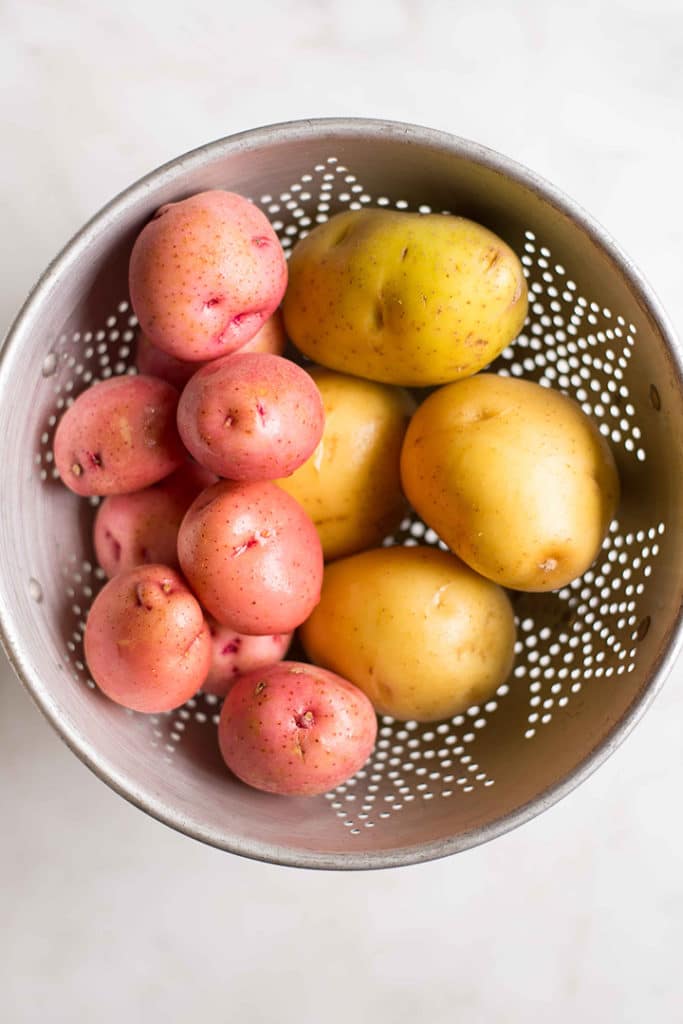
HOW TO PICK THE BEST POTATO
Picking the best potato involves choosing one that is blemish-free and not soft. If you are looking for the perfect baking potato to go alongside your steak, go for a long potato. These work best for microwaving, too.
Looking to boil some tatties? Go for nice round potatoes. They stay firm and hold their round shape when cooked.
Two medium potatoes will generally make 1 ½ cups of mashed potatoes and 1 ¾ cups of diced or sliced potatoes.
WHAT HAPPENS IF I EAT SPOILED POTATOES?
Eating potatoes past their prime can actually make you pretty sick.
Symptoms can be diarrhea, vomiting, muscle aches, cramps, nausea, and even fever. Don’t eat cooked potatoes older than 4 days and never eat potatoes that look like they have spots or fuzz. This could be mold.
Signs potatoes have gone bad or spoiled:
Potatoes that have been around a while may begin to sprout (read more about sprouted potatoes below). They can also change color, most of the time being green just under the skin. Discard them.
Other signs of potato spoilage are important to watch out for, too...
The potatoes have a musty smell: If the potatoes you have on hand no longer smell fresh, they may take on a musty odor. Don’t eat them in this case; throw them out.
The potatoes are wrinkly: Potatoes that look shriveled and wrinkly mean they are past fresh and should be discarded. They won’t be flavorful or pleasant to eat.
The potatoes are moldy: Moldy raw potatoes can possibly be cut to remove the mold and use the remainder. But if I see mold, I typically throw them out. Fresh potatoes are the best.
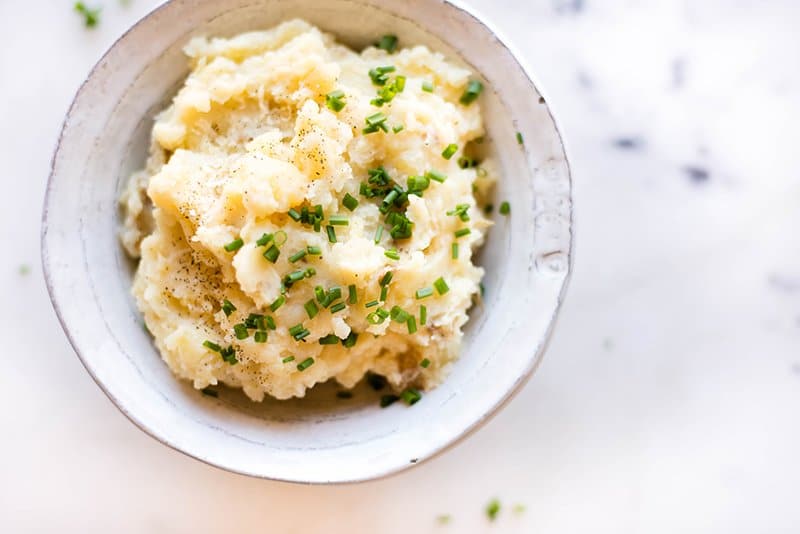
CAN YOU EAT SPROUTED POTATOES?
Don't eat sprouted potatoes or those with green coloring. Compost them instead!
When potatoes get exposed to warm temperatures or sit in the pantry for a while, they often sprout and sometimes get green skin. The glycoalkaloids in sprouted potatoes have the potential to be toxic when these two instances occur.
Did you know? Eggplants, tomatoes, and potatoes all have the alkoloids that can cause illness if eaten when they are too old.
WHAT ARE THE BEST WAYS TO STORE THEM?
When cooked: Cooked potatoes must be placed in an airtight container, refrigerated, and used within 4 days.
*You can freeze them as long as they are used within 2 months.
When uncooked: Uncooked potatoes should be fully dry before storing them in a dark, cool, dry space. The prime temperature is between 45F and 50F. An unheated basement may be ideal because the fridge is too cold and the countertop too warm.
Place them in a mesh or paper bag, basket, or cardboard box. I’ve also heard that storing potatoes and onions together is not a good idea as doing so may encourage sprouting.
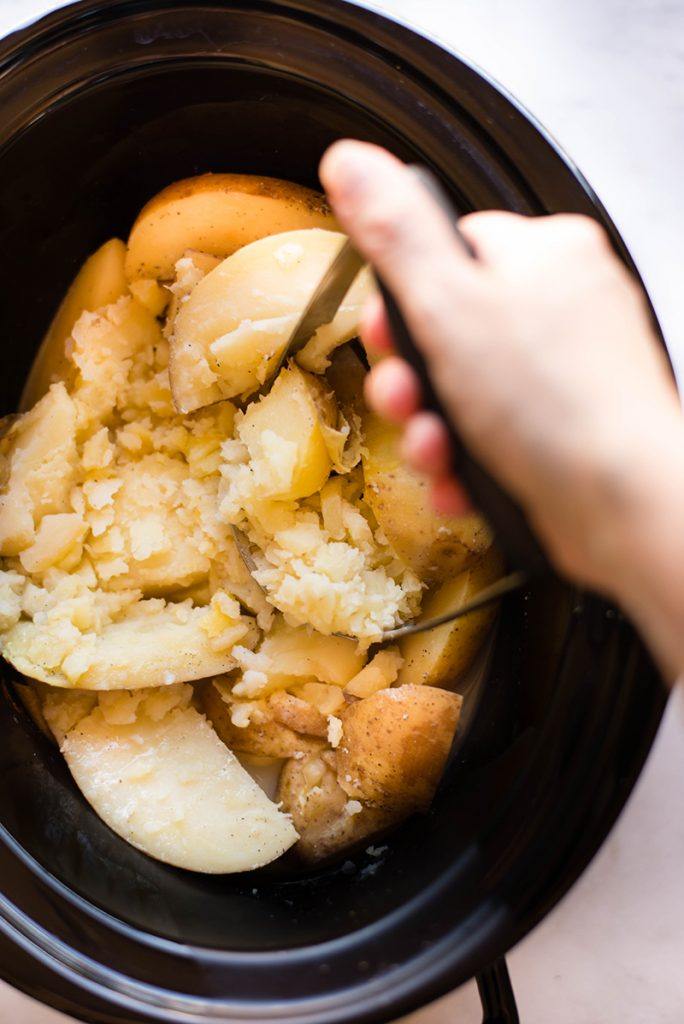
HOW LONG DO POTATOES LAST?
Cooked: After you cook and serve your potatoes, place them in an airtight container for storing in the fridge. Use them up over the next few days. Store up to 4 days in the fridge.
Raw: Raw, washed and peeled potatoes can be stored. But you’ve got to cover them in cold water before storing them in the dish for no more than 24 hours. Tip: When peeling potatoes, put the skin aside for the compost. Potato skins can easily block a drain (the same goes for cucumber skins, carrot skins, and onion skins).
Pantry: Most pantry shelves are room temperature, which means the ideal storage time is 2 weeks. Make time to periodically check on the potatoes and if they are looking like they are less fresh than you’d like, whip up a yummy batch of crock pot mashed potatoes. Hop on over to the post to see how to make them! You can freeze the leftovers (if you have any) and thaw and reheat later. They are still delicious!
Fridge: As mentioned earlier, storing in the fridge is not ideal (it’s only okay for small “new” potato varieties). Storing your potatoes below 40F can cause chilling injury. This makes the potatoes blotch and even changes the flavor to an unpleasant one as the starch turns into sugar.
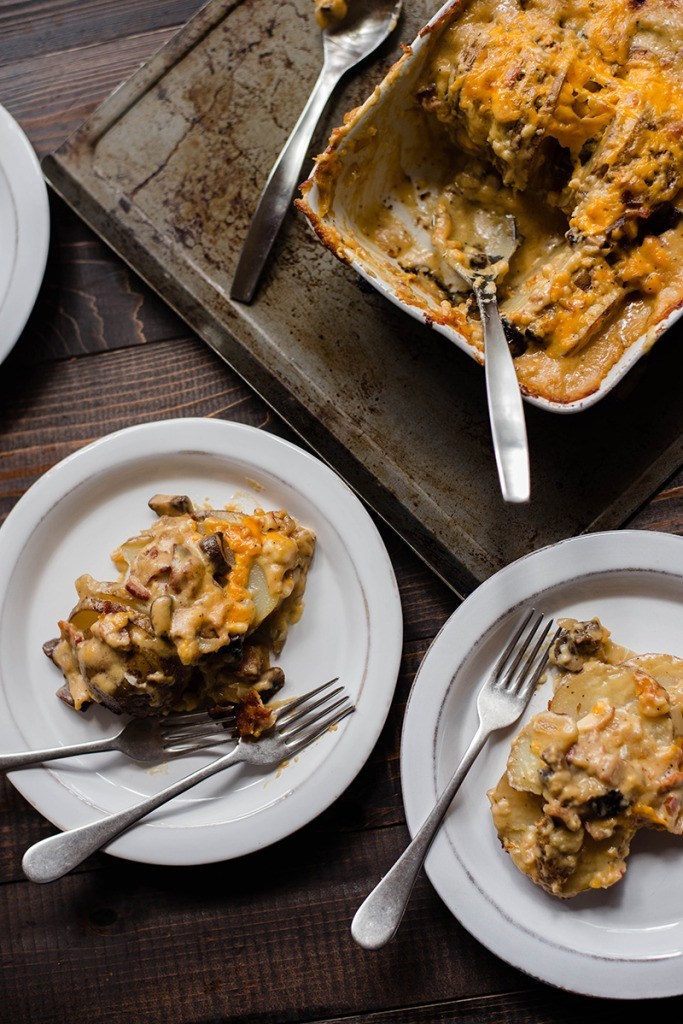
Delicious potato recipes you’ll love:
Now that you’ve got the in’s and out’s on tater storage, here are some great recipes:
- Sautéed Baby Red Potatoes
- Parmesan Mashed Potatoes
- Healthier Crock Pot Mashed Potatoes
- Low-Carb Cauliflower Mashed Potatoes
- Healthy Au Gratin Potatoes
This post contains affiliate links for products I use regularly and highly recommend.

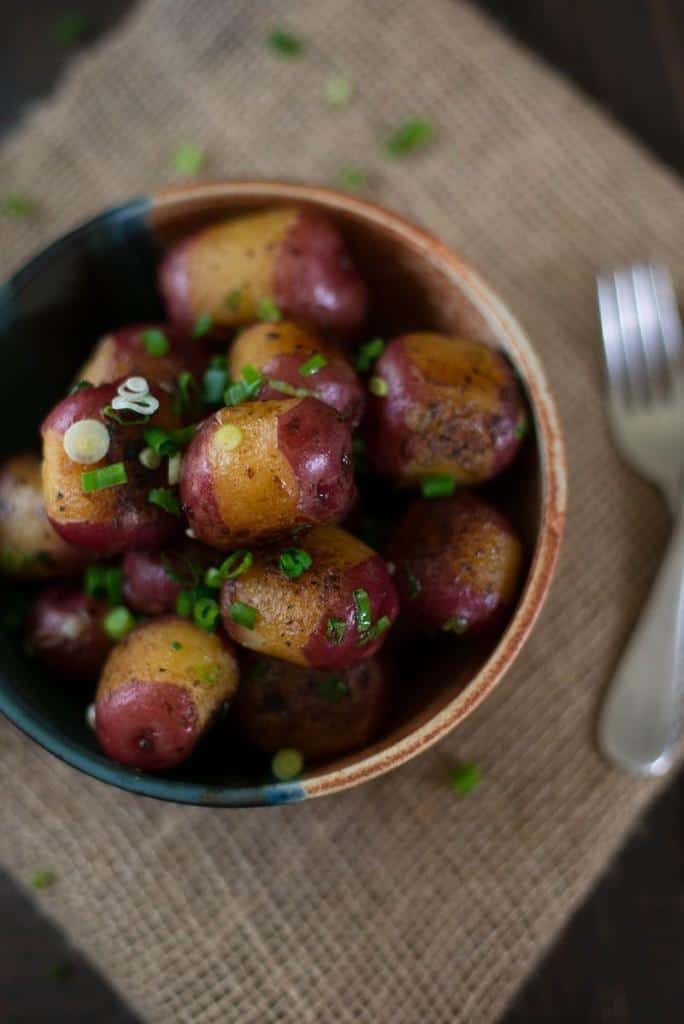

Comments
No Comments